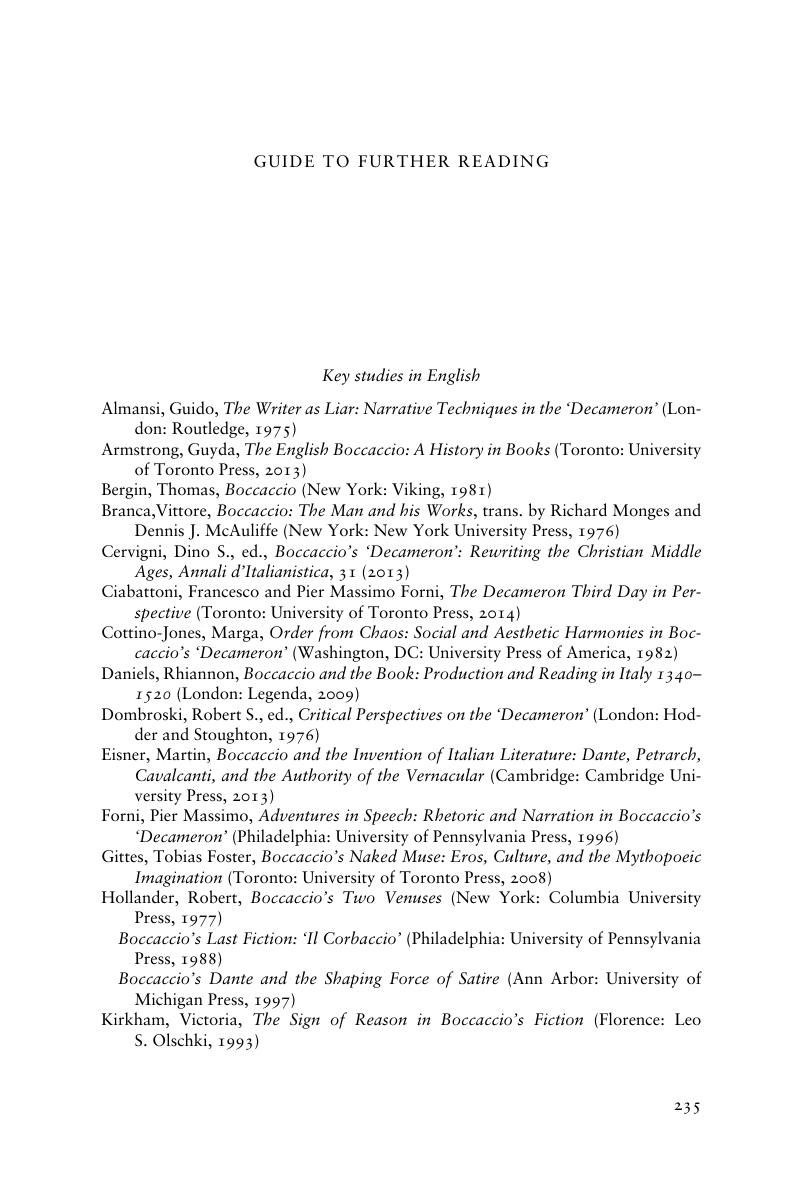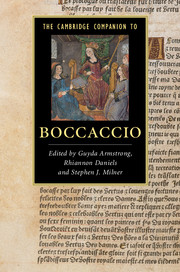Book contents
- The Cambridge Companion to Boccaccio
- The Cambridge Companion to BOCCACCIO
- Copyright page
- Contents
- Figures
- Contributors
- Preface
- List of Manuscripts
- List of editions and translations
- Chronology
- Part I Locating Boccaccio
- Part II Literary Forms and Narrative Voices
- Part III Boccaccio's Literary Contexts
- Part IV Transmission and Adaptation
- Guide to Further Reading
- Index
- Cambridge Companions to…
- References
Guide to Further Reading
Published online by Cambridge University Press: 05 August 2015
- The Cambridge Companion to Boccaccio
- The Cambridge Companion to BOCCACCIO
- Copyright page
- Contents
- Figures
- Contributors
- Preface
- List of Manuscripts
- List of editions and translations
- Chronology
- Part I Locating Boccaccio
- Part II Literary Forms and Narrative Voices
- Part III Boccaccio's Literary Contexts
- Part IV Transmission and Adaptation
- Guide to Further Reading
- Index
- Cambridge Companions to…
- References
Summary

- Type
- Chapter
- Information
- The Cambridge Companion to Boccaccio , pp. 235 - 242Publisher: Cambridge University PressPrint publication year: 2015



